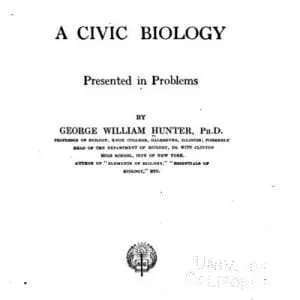[Originally published as Evolution Vestiges Fact, or Fiction?]
“We humans have many vestigial features proving that we evolved,” argues Jerry A. Coyne, Ph.D., biology professor at the University of Chicago. Coyne is the author of the book Why Evolution is True. “Vestiges” are biological features thought to be evolution relics. Scientific evidence, however, is critical; it asks the question, are evolutionary vestiges fact, or fiction?
Aristotle (384–322 BC) originated the vestiges theory. Even though Wikipedia considers the theory as “controversial and not without dispute,” the carte blanche use of vestiges continues as supporting evidence for the popular “evolution is true” argument.
Recent advances in biotechnology, however, are challenging the scientific validity of the evolution vestiges theory.
Origin of Vestige Theory
Observing the reduced size of eyes in the underground mole-rat, the 4th century BC Greek philosopher, Aristotle, wrote in his book, the History of Animals, that their eyes were “stunted in development.” Centuries later, Étienne Geoffroy Saint-Hilaire, a French naturalist, in 1798 was the first to link the concept of “vestiges” with evolution. Geoffroy explained:
Because Nature never works by rapid jumps… She always leaves vestiges of an organ, even though it is completely superfluous.
Geoffroy collaborated with Jean-Baptiste Lamarck (1744-1829), a French colleague, who listed many vestigial structures in his book Philosophie Zoologique. Commenting on Aristotle’s mole-rat observations, Lamarck explained that since it had received less sunlight:
…the mole has altogether lost the use of sight: so that it shows nothing more than vestiges of this [eye] organ.
As Darwin explained in his Autobiography, “the subject [evolution] was in the air.”
Capitalizing on the fray was Robert Chambers. As an entrepreneur and publisher, Chambers anonymously released his Vestiges of the Natural History of Creation in 1844. Chambers championed and popularized Geoffroy’s and Lamarck’s link between vestiges and evolution.
Chamber’s book soared into a sensational bestseller. Even Queen Victoria reportedly read and became fascinated with the book. The sales of Chamber’s book far exceeded that of the Origin of Species through the 1880s. Chamber’s book emerged as a philosophical tipping point in society. Vestiges, however, had yet to be scientifically validated.
Human Vestiges
German anatomist Robert Wiedersheim further extended the work of Geoffroy, Lamarck, and Chambers with his book entitled The Structure of Man (1893). According to Wiedersheim:
Organs having become wholly or in part functionless… For the greater part Organs, which may be rightly termed Vestigial.
The concept of vestiges eventually emerged as the stepping stone to gaining public belief in evolution. In North America, as in Europe, the broadening influence of evolution paralleled the rise of the Progressive Movement into the 20th century. The purpose of this secular movement was to create a utopian society. However, given public resistance to evolution, the strategy turned to science education. Evolution was thought to be scientific.
Public Education
 The Progressive Movement influenced publishers to incorporate evolution into their biology textbooks. At the same time, lobbyists in state and federal legislatures worked to expand nationwide mandatory public education programs.
The Progressive Movement influenced publishers to incorporate evolution into their biology textbooks. At the same time, lobbyists in state and federal legislatures worked to expand nationwide mandatory public education programs.
In 1914, American writer George William Hunter incorporated evolution into his new biology textbook entitled Civic Biology (cover page pictured left). As Wikipedia explains:
The views espoused in the book about evolution, race, and eugenics were common to American Progressives.
Civic Biology, like many other texts of the time, paraded vestiges as a fact. The New Standard Encyclopedia (1931), published by Funk & Wagnalls Company, described evolution as “facts from zoology, botany, and geology.” According to Funk & Wagnalls:
[Concerning] the place of man in the evolutionary plan… The vestigial structures show [a] connection with mammals who walked on four feet.
Evolution, race, and eugenics were broadly taught as scientific facts. Eugenics, meaning “the production of good offspring,” was adopted by the progressives to engineer their new utopian society, a plan eventually implemented by Nazi Germany.
Hunter explains in the section entitled The Races of Man:
At the present time there exist upon the earth five races or varieties of man… the highest type of all, the caucasians, represented by the civilized white inhabitants of Europe and America.
In essence, the uncivilized were relegated as vestiges—the relics of evolution. More racist excerpts from other sections of the book are in Part 2.
Butler Act
To challenge the Progressive Movement, state laws were enacted. In Tennessee the legislature passed the Butler Act in 1925. The statute read:
That it shall be unlawful for any teacher… to teach instead that man has descended from a lower order of animals.
 John T Scopes, a 24-year-old science and math teacher in Dayton, Tennessee, was accused of violating the act. In defiance of the act, the American Civil Liberties Union (ACLU) offered to defend anyone accused of teaching the theory of evolution.
John T Scopes, a 24-year-old science and math teacher in Dayton, Tennessee, was accused of violating the act. In defiance of the act, the American Civil Liberties Union (ACLU) offered to defend anyone accused of teaching the theory of evolution.
Scopes Trial
Tennessee’s prosecuting team, led by district attorney Tom Stewart, included Herbert and Sue Hicks, Ben B. McKenzie, and William Jennings Bryan. As a dominant force of the Democratic Party and former member of the US House of Representatives, Bryan passionately opposed evolution on religious and humanitarian grounds.
In Scopes defense, the team included Clarence Darrow, an ACLU attorney, Arthur Garfield Hays, Dudley Field Malone, W.O. Thompson, F.B. McElwee, and Charles Francis Potter. The trial became international known as the Scopes Trial, also known as the Monkey Trial.
Vestiges played a critical role during the court proceedings. Horatio Newman, a zoologist at the University of Chicago, was called as an expert witness. Newman testified that:
There are, according to Wiedersheim, no less than 180 vestigial structures in the human body, sufficient to make of a man a veritable walking museum of antiquities.
Media Frenzy
The eight-day trial captured international attention, igniting a media frenzy, with more than 200 newspaper reporters from all parts of the country, and even from London. Trained chimpanzees performed on the courthouse lawn while Chicago’s WGN radio station provided on-the-scene live coverage. For many, the trial was a mocking spectacle.
Charged for teaching evolution on May 5, the trial started on July 10 and found Scopes guilty on July 21, 1925. However, in January 1927, the Tennessee Supreme Court overturned Scopes conviction based on a procedural technicality. Registered as a Socialist, he later ran for the Kentucky congress in 1932. Defeated, Scopes later became financially successful by drilling for oil in Texas and Louisiana.
Hollywood Capitalizes
Hollywood eventually capitalized on the frenzy. In support of the Progressive Movement, their productions shrewdly crafted the portrayal to invite their audience to question the biblical account of creation. In 1955, American playwrights, Jerome Lawrence and Robert E. Lee, debuted their fictional account of the trial. The play’s title, Inherit the Wind, was cleverly quoted from Proverbs 11:29:
He that troubleth his own house shall inherit the wind.
In 1960, Lawrence and Lee released their play as a Hollywood film. The film, by the same title, was then revised and released three more times; in 1965, 1988, and 1999. Each film received numerous entertainment awards.
The Progressive Movement has since continued to sell their belief in evolution successfully. Far from the Butler Act era, the teaching of evolution as a scientific fact is now a government requirement in most public education systems—globally.
Aristotle’s vestige theory has long played as an essential selling point. According to the state-sponsored University of California website, Evolution 101, vestiges are:
An adaptation from the organism’s ancestor, but that evolved to be nonfunctional.
California presents vestiges as carte blanche proof of evolution, but without any validating scientific evidence. Now, with the availability of new 21st century technologies, testing the “evolution vestiges fact, or fiction” question can yield a valid scientific answer.
More in Part 2







